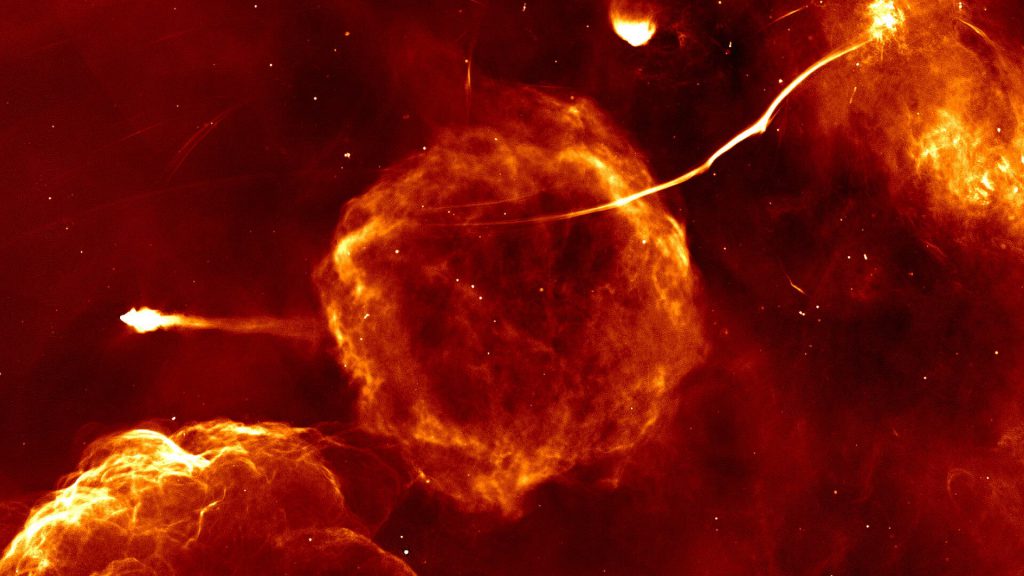
Another close-up shows a cloud known as G359.1-0.5, the glowing remains of a supernova explosion. To its left, the Mouse, a runaway pulsar possibly formed and ejected by the supernova. To its right, a radio-wave-emitting filament known as the Snake.
The Milky Way: An Electrifying View || Noise and chaos reign at the heart of the Milky Way, our home galaxy, or so it appears in an astonishing image captured recently by astronomers in South Africa. The image, taken by the MeerKAT radio telescope, an array of 64 antennas spread across five miles of desert in northern South Africa, reveals a storm of activity in the central region of the Milky Way, with threads of radio emission laced and kinked through space among bubbles of energy. At the very center Sagittarius A*, a well-studied supermassive black hole, emits its own exuberant buzz. We are accustomed to seeing galaxies, from afar, as soft, glowing eggs of light or as majestic, bejeweled whirlpools. Rarely do we glimpse the roiling beneath the clouds — all the forms of frenzy that a hundred million or so stars can get up to.






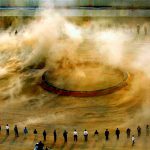



 Gerard Van der Leun
Gerard Van der Leun












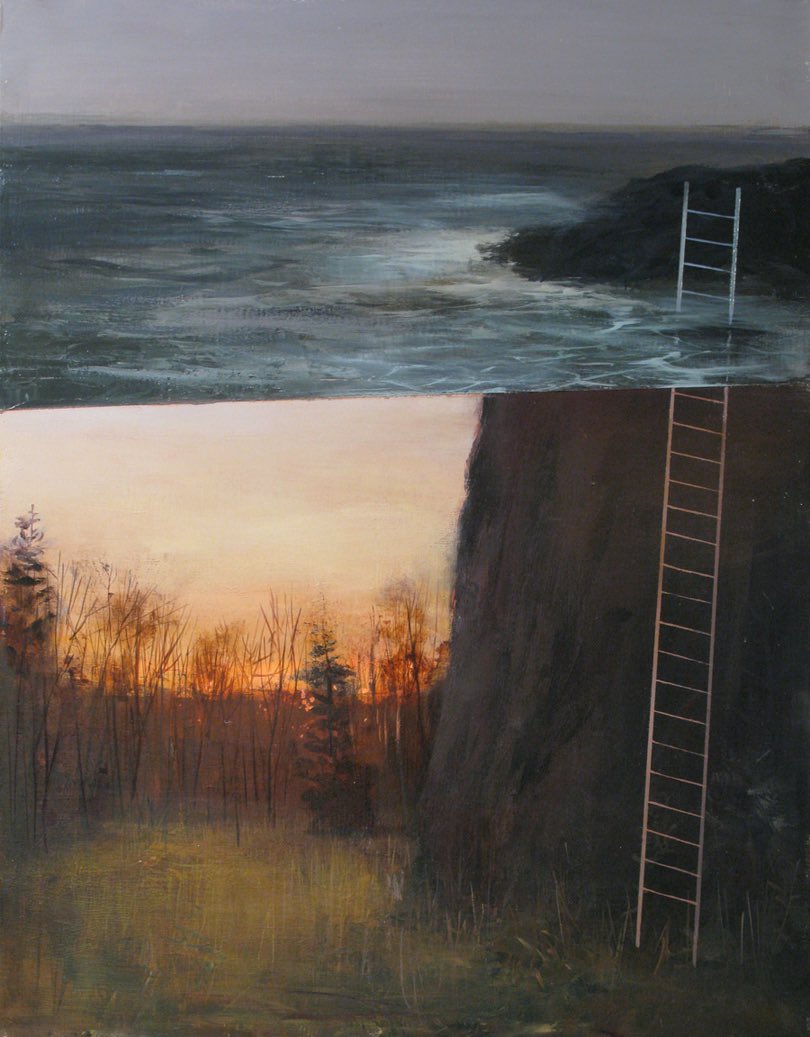


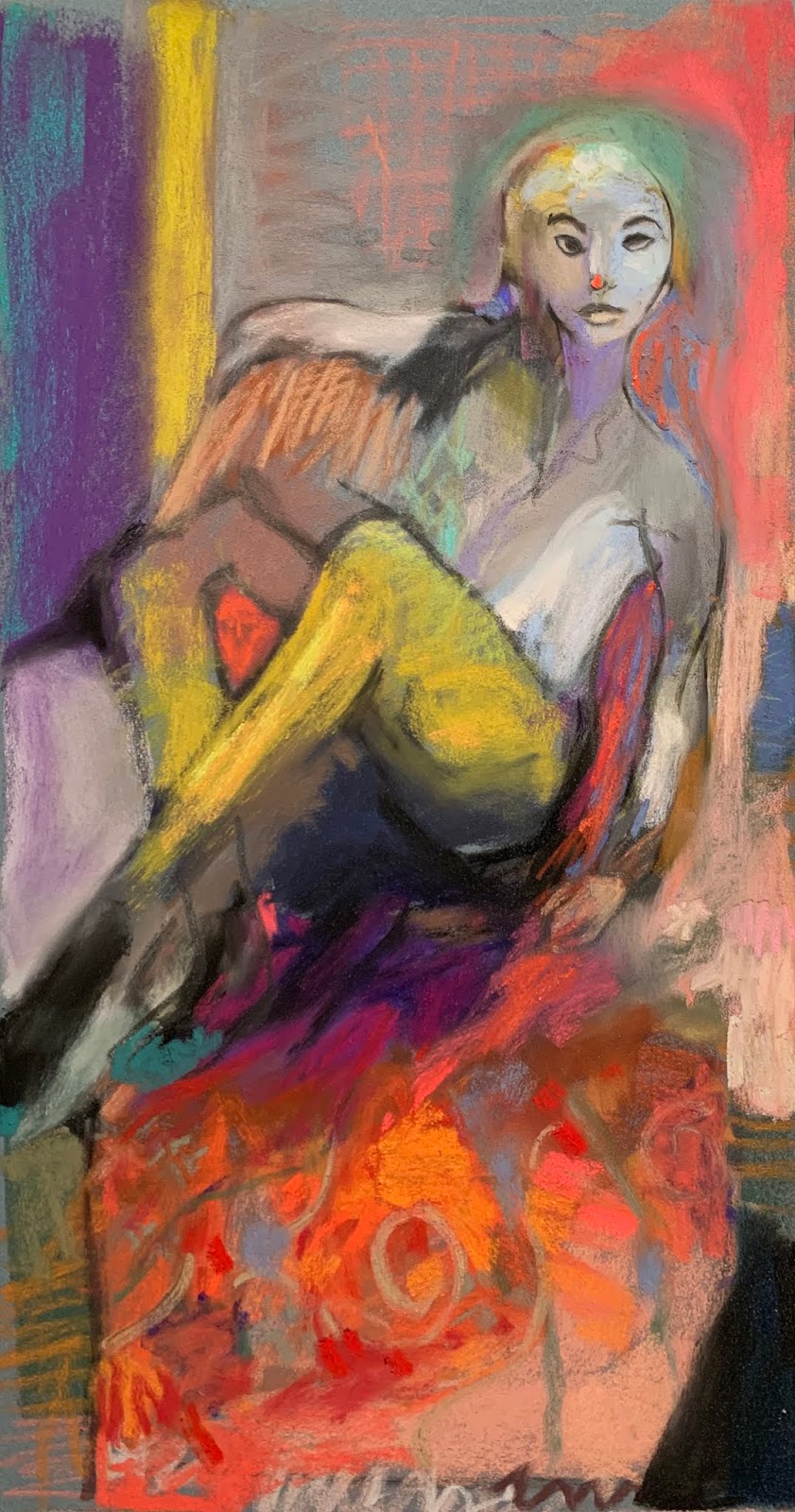
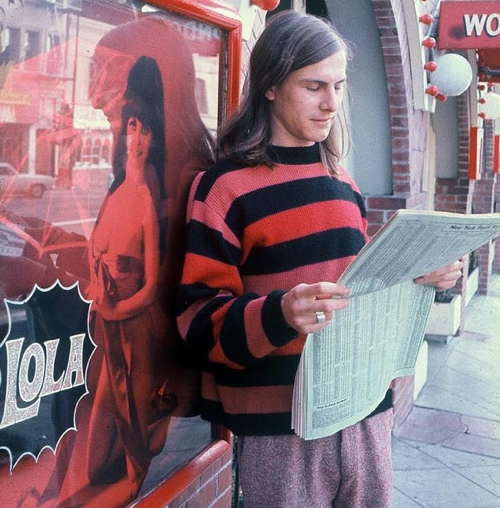
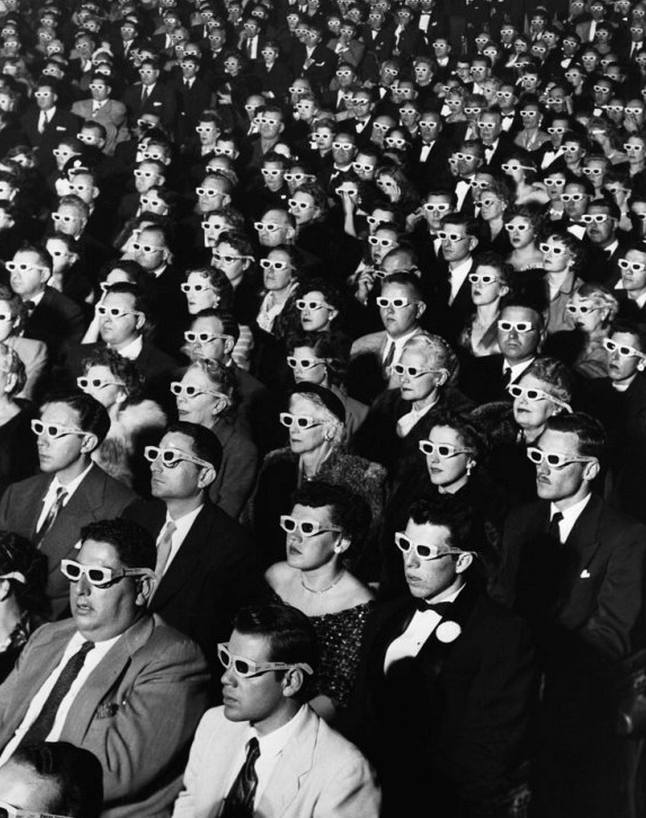
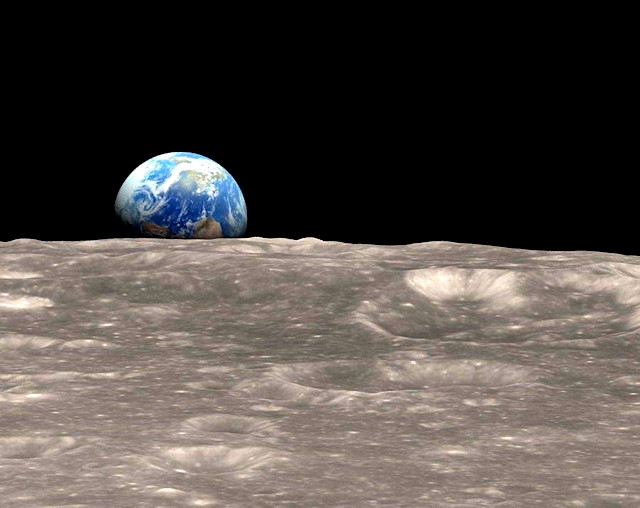





Comments on this entry are closed.
If I am not mistaken, these images are only artists’ interpretations of radio signal data, and though scientific in the sense that precision instruments were utilized to measure the radio frequency data, they are not photographs by any means. Nice to look at, though.
“Nice to look at, though.”
=================
No more so that looking at Denninger’s daughters stuff over at his place.
https://market-ticker.org/akcs-www?post=245063
No more so that looking at Denninger’s daughters stuff over at his place
I see your point, Ghostsniper. I fold.
The artistic part of this image is the choice of color cast. What the astronomers created is in black and white, and in negative: brighter is darker, a convention from the days of film-plate astrophotography, where the astronomers studied the negatives directly and only converted them to positive photographs when exhibiting them for the public. This is a public image for the non-astronomers.
These images are not interpretations. They are recreations of the 2-D image of the galactic center, through the process of of synthetic aperture imaging. They have an array, a collection, of radio dishes in two dimensions spread around their observatory area. As the earth is rotating, the radio signal from any one of those locations in space represented by each pixel continuously changes in relative phase between the receiving antennas. By doing lots and lots of 2-dimensional digital signal processing, they build up an estimate of the signal magnitude at various microwave wavelengths coming from each little pixel. The resolution of each little pixel, measured in arc-seconds of angle, is proportional to the physical distance across the antenna array. I think it’s something like 5 km end-to end.
So the picture is what you would see if your eyes could see radio waves like you can see visible light waves Except for the red color, that part is just artistry. The structures you see are really there, they are hot ionized gas radiating at microwave frequencies. Atoms and molecules do that all the time: they absorb photons of energy at frequency x and emit the equivalent amount of energy at frequency y. The hot gas atoms and molecules are also accelerated by electromagnetic fields, and radiate photons in the microwave frequencies as a result. The electromagnetic fields are created and sustained by the flow of these electrically-charged atoms and molecules. See Maxwell’s equations and a lifetime of study for the details.
If you went there in your 0.9999…c spaceship, it’s still all a bunch of hard vacuum, with a lot more dust flying about. The radiation bath would kill you pretty quick, and if you didn’t slow all the way down the dust would erode the outer hull of your ship and you’d die that way. It’s no place for biological organisms, but if there are any space-faring galactic civilizations that have preceded us, that space is probably full of their robots. The trick will be teasing out what are the natural structures, and what are the mech-made.
Thank you, John.
Hey, if we’re going to the core, are we going to take the Chef along with us and a Slayer tape?
(Too obscure?)
Sounds vaguely familiar.
Gimme another clue.
Waynes World?
Spinal Tap?
The hippie drum circle episode of South Park.
You seem to be giving APOD a run for it’s money! (apod.nasa.gov)
Where’s Beowulf Shaeffer when you need him? 🙂